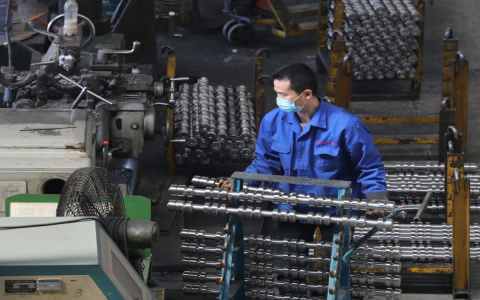Boeing and the Dark Age of American Manufacturing
In the annals of industrial history, few names resonate as strongly as Boeing. The aviation giant, synonymous with innovation and excellence, has for decades stood as the beacon of American manufacturing prowess. But like all titans, even Boeing has faced storms, the likes of which have cast shadows over its illustrious name. The question that looms large is: Are we witnessing a dark age of American manufacturing, with Boeing as a case study?

Boeing’s journey is one of highs and lows. The company’s trajectory mirrored the American dream—pioneering spirits fueled by relentless innovation. From crafting the iconic 747 to leading space exploration initiatives, Boeing has consistently been at the forefront. But every story has its turbulent chapters. Boeing’s recent struggles, notably the 737 MAX crisis, have spotlighted deeper issues within American manufacturing at large.
The Crisis of Quality and Trust
The 737 MAX debacle was more than a technical hiccup; it represented a chasm between Boeing and its unwavering commitment to safety. This crisis underscored a painful reality: the erosion of quality control—a hallmark of American manufacturing excellence. In a world where consumers and regulatory bodies demand impeccable standards, any oversight can be catastrophic. The stakes are exponentially higher for aerospace, where the margin for error is non-existent.
This isn’t solely Boeing’s crucible; it reflects a broader trend in American manufacturing. There was a time when "Made in America" epitomized quality. However, in the race to cut costs and boost profit margins, some argue that manufacturing has sacrificed its soul.
Global Competition and Outsourcing
One cannot discuss manufacturing without acknowledging the elephant in the room: globalization. While offering unprecedented opportunities, globalization has introduced fierce competition. American companies now compete with nations boasting lower production costs and, sometimes, fewer regulatory hurdles. Many have resorted to offshoring and outsourcing, a move that, while economically viable in the short term, has potential long-term repercussions for quality and control.
Boeing’s global supply chain is vast, but with broad nets come loose threads. Relying heavily on global partnerships necessitates robust management systems to ensure that standards aren’t compromised. Maintaining this balance is pivotal for regaining trust and ensuring longevity.
Innovation versus Safety

In the relentless pursuit of innovation, there’s a tightrope that all manufacturers walk—balancing cutting-edge advancements with unwavering safety protocols. Boeing’s story serves as a reminder of the consequences when this balance is disrupted. While innovation drives progress, it should never come at the expense of fundamental safety.
The future of manufacturing lies in harmonious integration, where technological advancements enhance, not jeopardize, safety standards. By focusing on innovating responsibly, manufacturers like Boeing can restore their reputation and pave the way for a brighter era in American manufacturing.
A Path Forward
Despite these challenges, crisis often catalyzes positive change. Boeing’s commitment to rectifying past errors and investing in new technologies may well herald a renaissance. For Boeing, and American manufacturing at large, the path forward lies in embracing past lessons and fostering a culture of quality, transparency, and accountability.
To regain global trust and stature, manufacturers must adopt an approach that harmonizes innovation with ethical practices. Forging robust partnerships, reinvesting in local talent, and nurturing domestic capabilities are paramount for creating resilient manufacturing ecosystems.
In Retrospect
The tale of Boeing, intertwined with the trials of American manufacturing, is complex, characterized by resilience and reinvention. In navigating these turbulent waters, Boeing and its peers have the unique opportunity to redefine what it means to be a global leader. By consistently prioritizing quality and trust, they can illuminate the path from this dark age, ushering in a new era of American manufacturing excellence. The world is watching, and the skies await.



